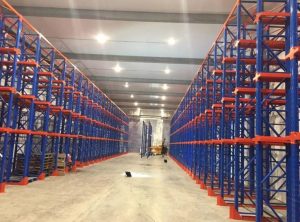Cold Storage Room Size and Layout
Designing an efficient cold storage room involves more than just determining the right size. The layout plays a crucial role in ensuring optimal space utilization, maintaining product quality, and enhancing operational efficiency. This article explores the essential aspects of cold storage room size and layout, providing guidance on how to create a functional and effective storage environment.
Understanding Cold Storage Room Size
The size of a cold storage room is determined by several factors, including the type of products stored, the volume of inventory, and the required temperature conditions. Accurate sizing is critical to ensure that the storage environment meets the needs of the products and complies with industry standards.
1. Product Types and Requirements
Different products have distinct storage requirements that influence the size of the cold storage room:
- Perishables: Products like fresh produce and dairy require moderate temperatures and high humidity. The room size must accommodate the volume of these items and allow for proper ventilation.
- Frozen Goods: Frozen foods need lower temperatures. Ensure the room can handle the thermal load and maintain consistent temperatures throughout.
- Pharmaceuticals: Temperature-sensitive pharmaceuticals require precise climate control. The room size should include space for specialized equipment and regulatory compliance measures.
2. Inventory Volume and Turnover
Estimating the volume of inventory and understanding turnover rates are essential for determining room size:
- Current Volume: Measure the total volume of products, including packaging. This helps in calculating the minimum space required for storage.
- Future Growth: Plan for future increases in inventory to avoid the need for frequent expansions or reconfigurations.
- Turnover Rate: Higher turnover rates may necessitate larger or more accessible storage areas to facilitate efficient movement and reduce congestion.
3. Temperature and Humidity Control
Effective temperature and humidity control are vital for maintaining product quality. The size of the cold storage room should accommodate the necessary equipment:
- Refrigeration Systems: Select systems that can handle the cooling load and maintain required temperatures. Consider the placement of these systems to optimize efficiency.
- Insulation: Proper insulation helps maintain temperature and reduce energy consumption. Ensure that the room size allows for effective insulation installation.
Designing the Cold Storage Room Layout
A well-designed layout maximizes space utilization and operational efficiency. Key aspects of layout design include shelving, access points, and workflow.

1. Shelving and Racking Systems
Choosing the right shelving and racking systems is crucial for optimizing storage capacity:
- Vertical Space Utilization: Utilize high shelving or racking systems to make the most of vertical space, allowing for greater storage capacity.
- Adjustable Racks: Consider adjustable racks to accommodate various product sizes and adapt to changing storage needs.
- Accessibility: Ensure that shelves and racks are organized to facilitate easy access to products and minimize handling time.
2. Access Points and Aisles
Efficient access points and aisle design are essential for smooth operations:
- Traffic Flow: Design aisles to support the flow of personnel and equipment. This reduces congestion and minimizes the risk of damage to products.
- Loading and Unloading: Provide adequate space for loading and unloading activities. This includes designing entry and exit points to accommodate delivery trucks and equipment.
- Emergency Access: Ensure that there are clear pathways and emergency exits in case of any issues or evacuations.
3. Workflow Efficiency
Design the layout to support efficient workflow and operations:
- Operational Zones: Create designated zones for receiving, storing, and dispatching goods. This streamlines operations and reduces cross-contamination.
- Temperature Zones: In larger storage rooms, consider creating temperature zones for different product types, each with appropriate conditions.
- Labeling and Signage: Use clear labeling and signage to guide personnel and streamline inventory management.
Integrating Technology and Equipment
Modern cold storage rooms often incorporate advanced technology and equipment to enhance efficiency and maintain optimal conditions.
1. Temperature Monitoring Systems
Implement temperature monitoring systems to ensure that the cold storage room maintains the required conditions:
- Continuous Monitoring: Use sensors and alarms to continuously monitor temperature and humidity levels. This helps in detecting and addressing any deviations promptly.
- Data Logging: Maintain records of temperature and humidity for compliance and quality control purposes.
2. Automated Storage Solutions
Consider integrating automated storage solutions to improve efficiency:
- Automated Racking Systems: Use automated racking systems to handle and organize inventory efficiently.
- Conveyor Systems: Implement conveyor systems for moving products within the cold storage room, reducing manual handling and increasing speed.
Conclusion
Designing the size and layout of a cold storage room involves careful consideration of various factors, including product types, inventory volume, temperature control, and workflow efficiency. By addressing these aspects, you can create a cold storage environment that ensures optimal product preservation, operational efficiency, and compliance with industry standards. Effective planning and the integration of modern technology can further enhance the functionality and performance of your cold storage room.
